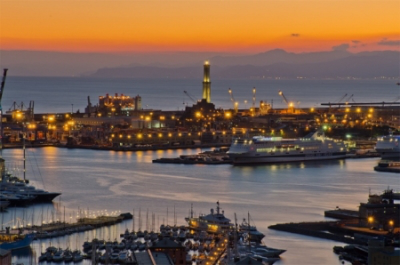Speaker
Dr
Marco Casati
(Università degli Studi Milano Bicocca)
Description
Atmospheric Particulate Matter can induce aesthetic damage and decay of materials as a consequence of deposition process. Several studies involving specimens exposure tests were carried out, both in recent and past years. Repeatable samples are hardly obtainable due to the fact that particles deposition rates depend on several factors. In this work a new TSP sampler is presented. The sampler can collect atmospheric particles directly on the surface of interest – stone, metal, glass, PTFE, etc -. Analysis and diagnostic surveys are consequently performed, and different behaviour between inert and active surfaces can be observed, allowing evaluation on particles-induced decay processes. The sampler is made of a 50x50x20cm box covered by a pitched roof. The Air Exchange Rate in the exposure box is standardized at 7 min-1 by means of a fan; possible sampling size-artifacts are not present as an identical particles size distribution – R2= 0,993 - was measured inside and outside the exposure box during a inter-comparison activity by means of Optical Particle Counters. A three-months sampling test was performed in Milan involving four different substrates: PTFE and Quartz filters (used as passive samples), Aluminium foil and Marble specimens. During the three months sampling, about 2mg of TSP were collected on filter surfaces, giving a 62 ± 7 µg/cm2 average deposition rate. In term of mean quantity, this value agrees with similar literature studies and shows a better repeatability. Ion Chromatography and XRD analyses performed on exposed Marble specimens show an increase of nitrate, sulphate and oxalate ions; XRD patterns show the presence of gypsum (CaSO4 2H2O) and nitratine (NaNO3). This finding clearly indicates the potential decay due to the presence of deposed particles. Raman spectroscopy was performed on Aluminium foil: carbon spectra have been obtained, providing information about the structural characteristics of collected carbon particles.
| Working group IAS (WG1, WG2, WG3) o sessione speciale (SPR) | WG2 |
|---|---|
| Tipo di presentazione (orale o poster) | Poster |
Primary author
Dr
Marco Casati
(Università degli Studi Milano Bicocca)
Co-authors
Dr
Antonio Sansonetti
(ICVBC - CNR)
Dr
Claudia Conti
(ICVBC - CNR)
Prof.
Ezio Bolzacchini
(University of Milano-Bicocca)
Dr
Grazia Rovelli
(University of Milano Bicocca)
Dr
Luca D'Angelo
(University of Milano-Bicocca, Department of Earth and Environmental Sciences)
Dr
Luca Ferrero
(University of Milano-Bicocca)

